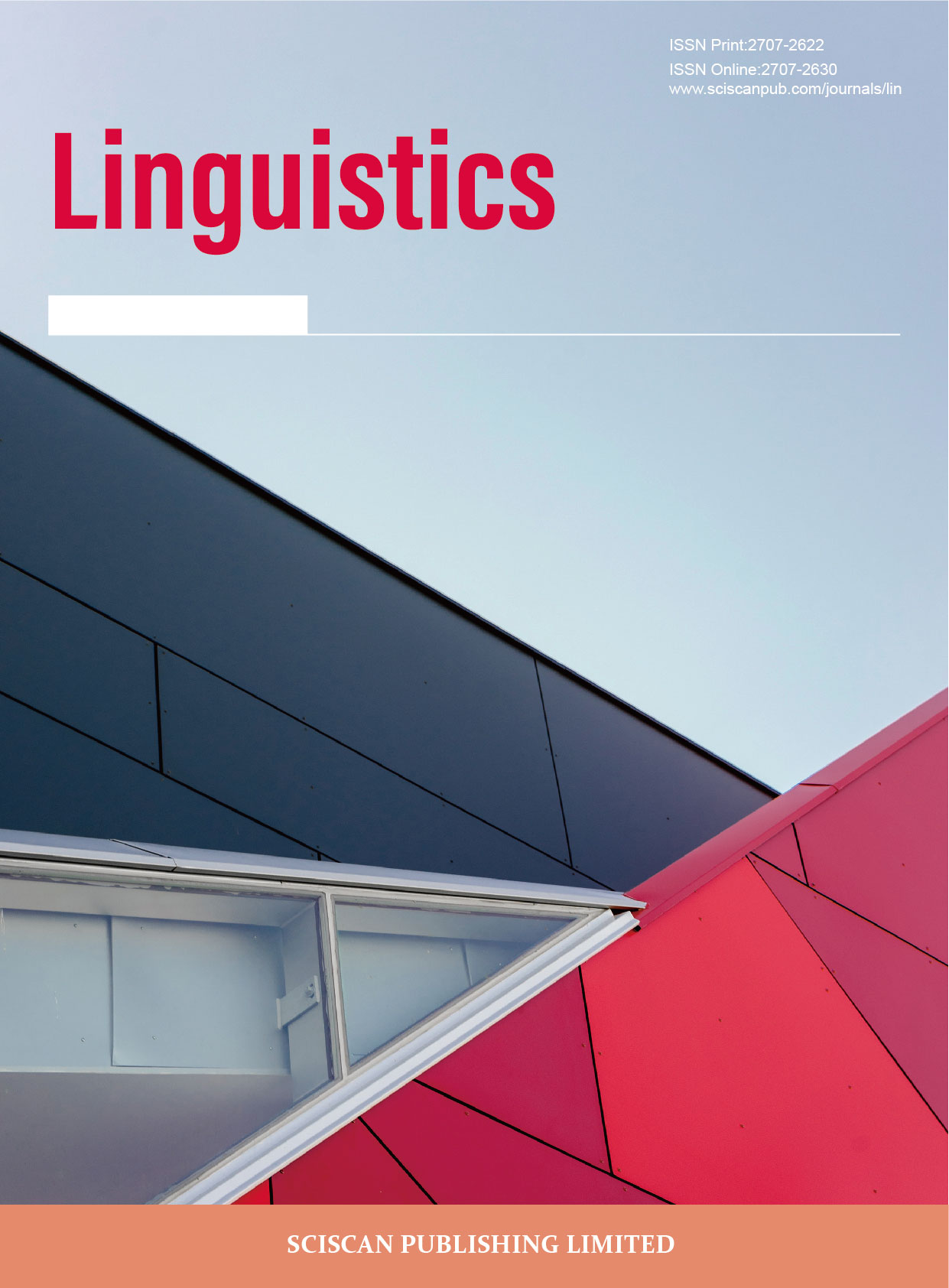尤金·奈达翻译理论评析
A Critical Analysis of Eugene A. Nida’s Translation Theory
- Authors: 王爽
-
Information:
华东理工大学外国语学院,上海
-
Keywords:
Nida; Translation theory; Critique奈达; 翻译理论; 评析
- Abstract: This article reviews the three stages of Nida’s translation theory development, as well as the development and research status of functional equivalence theory in China, and points out the limitations of the research focus. The second stage of its theoretical development, namely the stage of communicative theory, is the main content, which is outlined in conjunction with the four-step translation process. Based on the contributions and limitations of Nida’s translation theory, the following conclusions are drawn: the development of theories always has its process, and when evaluating Nida’s translation theory, one should neither fully accept nor completely deny it, but rather take its essence and discard its dross, and develop translation theory based on criticism. 本文回顾了奈达翻译理论发展的三个阶段,以及功能对等理论在中国的发展与研究状况,并提出了研究焦点的局限性。以其理论发展的第二阶段也就是交际理论阶段为主要内容,结合翻译四步程序进行概述。从奈达翻译理论的贡献以及局限性两方面进行评述,得出以下结论:理论的发展都有其过程,评价奈达翻译理论时应该既不全盘接受也不完全否定,取其精华,弃其糟粕,在批评的基础上发展翻译理论。
- DOI: https://doi.org/10.35534/lin.0502013
- Cite: 王爽.尤金·奈达翻译理论评析[J].语言学,2023,5(2):157-169.
1 引言
奈达的等效翻译理论自从引入中国以来,无论是其翻译理论的译名还是对实践的指导意义,在翻译理论界引起了诸多评论。但一直以来都有一些文章混淆了该理论的内容,或是在应用过程中生搬硬套,参杂其他翻译原则,导致应用的界限模糊,不能发挥更好的指导意义。本文按照奈达理论发展时期的分类,对交际翻译理论阶段的核心内容进行历时性梳理,并对错误使用理论指导实践的例子进行分析和解释。最后对该理论进行评析。
2 文献综述
奈达的功能对等理论最初基于英国翻译家Tytler提出的“同等效果论”。Tylter在他的著作Eassy on the Principle of Translation[1]中认为,优秀的译文应该和原作产生同样的效果。1953年,英国翻译家厄里在此基础上提出了“对等理论”这一概念。
基于此,奈达在1960年初提出了“形式对等”原则;1964年,在《翻译科学探索》一书中提出了“形式对等”和“动态对等”的概念。形式对等指的是在语言的成分和形式的表达上在译入语和源语之间尽可能地对等;动态对等指的是从语义到表达风格,在译入语中用最切近,自然,对等的语句把源于所要传递的信息表达完整[2]。在60年代,“形式对等”和“动态对等”受到了英国翻译理论家的广泛关注。1986年,在他的著作From One Language to Another中奈达用“功能对等”取代了“动态对等”这一术语[3]正式提出了功能对等理论。
从20世纪80年代开始,奈达的翻译理论首先由谭载喜先生在《外国语》(上海外国语学院学报)上进行了系统介绍。谭载喜首先用大量的笔墨介绍了奈达作为虔诚基督徒的教育背景和职业生涯。其中充分肯定了奈达翻译理论在圣经翻译领域以及其他翻译领域的可行性。奈达翻译理论经历了从描写语言学阶段到交际理论阶段,再到社会符号学阶段的发展。
我国有关奈达翻译理论的论文大致可分为以下三种类型:(1)对奈达本人以及翻译理论的介绍,包括对其著作的译介评价[4-7];(2)对奈达翻译理论的对比研究、阐释以及理论发展的评析[8-10];(3)利用奈达翻译理论的主要内容解释翻译实践,如读者反映论、功能对等、翻译过程论等,其中包括林克难在国际乒联服务中心的文件翻译工作经验[11],结合读者反映论、语言共性论,以及语义单位和核心句理论,证明了奈达翻译理论在翻译传递信息为目的的文本时的实用性。
随着奈达的动态对等理论被引入中国,等效翻译理论在国内得到了进一步的发展并产生了巨大影响。翻译理论家金隄在对奈达的动态对等理论进行了大量的研究和阐释后,提出了自己的等效理论(Theory of Equivalent Effect)。在1989年出版的《等效翻译探索》一书中,金隄指明了三个他认为最为重要的概念:第一是接受者概念。他认为过去的翻译过程止于译文,而根据等效翻译理论,译文必须被译文读者所接受,翻译才算完成。等效理论要求译者充分考虑对接收者的效果。第二是效果概念。他指出:“这里的效果,只包括信息对接收者的作用,不包括信息接收者的反应。”[12]这一点与奈达的观点有所不同。而他所认为的全部作用,包括接受者获得的一切理解和感受,包括主要精神、具体事实和意境气氛三大要素。第三是对等概念。他认为翻译中的对等是一种综合的对等,不是机械的语言学或语义学上的对等,而是通过综合全面的考虑达到效果上的对等。他指出为了实现效果上的对等,译文必须要通顺达意。奈达用到了“自然”(natural)这个概念。对等是个相对的概念。
陈宏薇将从奈达翻译理论传入中国到中国译界的不同反应定义为“奈达现象”。基于《中国翻译》这一杂志,统计了从1995年到2000年关于奈达翻译理论的译介内容和引用次数,以及对其他外国翻译家及其理论的译介,旨在了解我国译界对奈达翻译理论的接受、运用与反应情况。得出我国翻译研究在第四阶段产生质的飞跃,翻译研究在这一时期正走向成熟[13]。邵璐在《误译·无意·故意——评关于奈达翻译理论的若干争议》中,就奈达对于“翻译科学”的观点,以及dynamic equivalence的翻译问题,解释了相关学者对于奈达理论的质疑,并从语言差异、文化差异和接受差异三个方面对于误读进行了归因。对于不良译论批评作风进行了批评,反驳所谓的“翻译无用论”的观点。[14]
关于奈达翻译理论,国内学者著有许多系统的论著。从上世纪谭载喜的《奈达论翻译》《新编奈达论翻译1999》到二十世纪初马会娟编写的《奈达翻译理论研究》,再到2016年杨司桂编写的《语用翻译观:奈达翻译思想在研究》。关于奈达的翻译理论研究层出不穷,在翻译学术界仍然具有旺盛的生命力。
然而,对于奈达翻译理论的介绍以及运用总是聚焦在翻译的标准即读者反映论以及功能对等上[13]。大多数论文以功能对等为原则进行翻译实践分析,并涉及到不同文体和不同层面的翻译。在文本层面,涵盖了包括《骆驼祥子》《傲慢与偏见》《小王子》等文学类小说、散文和诗词,还包括政治语篇、科技英语、商务英语等非文学翻译题材;词汇层面,涉及到新闻词汇、习语、文化负载词等的翻译。由此可见,功能对等理论在实践应用方面可谓百花齐放,硕果颇丰。究其原因,不外乎以下几个方面:第一,奈达的翻译理论一反译介关于直译异议的争论,将重点放在读者的反应上,并结合了语言学的各个分支,如社会语言学、符号学和语用学,其理论体系较为完整,包括词汇、句法、文本和风格等多个层次。第二,奈达翻译理论的引入时间较早,许多翻译研究者都对其进行了深入分析和阐释,因此影响广泛。第三,翻译家Baker曾经指出,功能对等翻译原则包括四个层面,即词汇、句法、语篇和文体方面的对等。对等受语言、文化等多种因素的影响,因此对等是相对的,绝对意义上的对等是不存在的[15]。
综上所述,奈达翻译理论丰富,但是大多学者的研究重点局限于多次被提及的热点,即功能对等、读者反映论。鉴于当今奈达翻译理论被应用于各种文体和类型的翻译实践,因此全面概述奈达翻译理论变得必要。本文旨在梳理奈达翻译理论在其发展的第二阶段即交际翻译理论阶段的基本内容,并结合前人研究和翻译实践,重新评价奈达翻译理论在当今的贡献和局限性。
3 奈达及其翻译理论概述
奈达翻译理论的发展可以大致分为三个阶段。第一阶段为结构主义语言学阶段,主要著作有《英语句法概要》《从圣经翻译看翻译原则》,这一时期它通过对句法、语言翻译问题的描写,阐明语言的结构性质,并将语言差异当作相同本质的不同现象加以描写。
第二阶段为翻译科学说与翻译交际说阶段。这一阶段从1959年《从圣经翻译看翻译原》到1969年《翻译理论与实践》的发表结束。该阶段的主要学说有翻译科学说、翻译交际论、动态对等论、翻译功能论以及翻译的四部模式,即分析—转语—重组—检验。
第三阶段发生在70—90年代,是对前期理论的补充和修改,采用了社会符号学模式。这一阶段奈达翻译理论有主要以下四个方面的发展:立足于社会符号学理论;重视语言修辞特征;将“动态对等”发展为“功能对等”;不再采用语法意义、所指意义、内涵意义的区分方法,而分为修辞意义、语法意义、词汇意义。各意义又分所指意义和联想意义两种。第三阶段可以说是奈达主要翻译理论的顶峰阶段。本文主要阐述奈达翻译理论第三阶段的主要思想并进行评析。
3.1 翻译交际论
奈达翻译理论在其发展的交际理论阶段受到了语言学的深刻影响。从1959年到1969年,他出版了《翻译理论探索》并且与塔伯合作编写了《翻译理论与实践》(The Theoasxry and Practice of Translation)。在这一时期,他将通讯论和信息论应用于翻译研究,认为翻译就是交际的过程。他指出“语言交际产生于社会场合,把它从这个场合中抽象出来,就不可理解。相反,必须把他置于整个环境加以分析,其中包括参与者与语言的关系,话语参与者作为特定语言群体成员的相互关系,以及信息信息怎样把信息源和信息接受者联系起来的方式”[2]。
这种翻译交际法根植于他翻译圣经的根本目的。因此,该理论更适用于以“信息功能”和“呼唤功能”为主的文章。关于该理论对一些文化负载词,以及特殊文学类文本翻译的不适用,将在后面的评析中详细阐述。
3.2 语言共性论
奈达认为,每种语言都有其自身的特点和天赋(Each language has its own genius)。为了有效地进行交流,我们必须注重每一种语言的特色。发挥译入语的潜能,尽可能地表达出翻译效果,而不是创造,或是将源语的语言形式强加在译入语上。只要可以在源语中表达出来的信息,就可以在译入语中表达出来。但如果源语的语言形式是信息不可或缺的一部分,那么在翻译过程中很容易发生改变。因此,为了保全信息,我们必须接受语言形式的改变。这一改变受到以下两个因素的影响:语言差异和文化差异。语言类型和文化背景相同的语言,翻译之后的语言形式变化就相对较小,反之,则形式变化较大。
3.3 翻译信息论
奈达认为,翻译就是在接受语之中以最自然的方式重现原文中的信息,首先是重现意义,然后是风格。翻译的核心任务就是传达意义。重现信息要求译者精通语法和词汇转换。读起来不像翻译的翻译就是达到了自然的对等。[16]对等分为自然的对等和严格的对等。翻译中意义是第一位的,但是形式也十分重要。在重组翻译风格时,要做到功能对等。在翻译过程中,有一些基本的指导标准:语境连贯高于词汇对应;动态对等高于形式对应;语言的声觉形式高于书面形式(针对圣经翻译,因为在人们总是在礼拜上听到诵读圣经而非阅读纸质版圣经);受读者欢迎的翻译高于传统有声望的翻译。以上四点分别对应语言形式、读者反映、交际环境以及和读者有关因素,如年龄、性别、受教育程度等。在The Theory and Practice of Translation[16]中,奈达将语言功能分为信息功能、表现功能和祈使功能。在From One Language to Another(1986:25)中,奈达将语言的功能分为九类,即表现功能、认识功能、人际功能、信息功能、祈使功能、行为功能、情感功能、审美功能和自我解释功能。译文应该在这九个功能上进行对等。但是判断对等的标准不在于文本本身,而在于读者的心理反应。
3.4 功能对等论与读者反应论
作为奈达理论的核心思想,功能对等(Functional Equivalence)的前身是动态对等(Dynamic Equivalence)。但是,有人将“dynamic”理解为具有某种特殊效果和感染力的东西。随着动态对等这一理论的不断发展,奈达在1986年与瓦德(De Warld)合著的《从一种语言到另一种语言》(From One Laguage to Another)一书中以“功能对等”取代“动态对等”一说,意在使术语含义更通俗易懂。“动态对等”包含四个方面:词汇对等、句法对等、篇章对等和文体对等。动态对等理论的核心是让目的语读者对译文的反应与源语言读者对原文的反应基本一致[17]。简言之,译文要做到“最切近的自然对等”。
功能对等理论的核心是读者反映论。奈达认为,传统翻译的侧重点在于形式,在于句法特征的翻译,如排比、押韵等句法特征。而当今的翻译应将关注点转向读者的反应。并且,译文接受者与信息的关系应该是在实质上相同与原文接收者与信息的关系。译文在译文读者心里的反应要和原文在原文读者心中的心里反应相似。而考虑到读者的心理反应,就不能只看文本,还要考虑到文字产生的环境和读者的生存环境。因此,奈达就将文化、社会、心理等因素都囊括进他的理论中。这一观点的形成也与当时语言学的发展有关。奈达早期受到美国结构主义派布龙菲尔德和语言学家萨丕尔的影响。后来的语言学家更加关注语言外的因素,各种语言学分支诞生,如心理语言学、社会语言学、语用学和符号学应运而生。可以看出,奈达的读者反映论就是关注了更多的语用学因素而产生的。
3.5 翻译程序
为了证明其功能对等理论,奈达从以下三个方面描写了功能对等的具体内容。
在词汇层面上,奈达认为,既然语法是有意义的,相同的语法结构可能表达不同的意义。并且,传统的词性分类会影响对意义的理解。因此,奈达抛弃传统语法中的词性概念,不再用名词、动词、形容词、副词等概念来辅助翻译。他将词分为实体(object)、事件(event)、抽象概念(abstract)、关系(relations)[16]。实体指具体的人和物等。事件指行动、过程等发生的事。抽象概念指对实体和事件等质量和程度的描写。关系指用来将实体、事件、抽象概念连接起来的手段,比如连词和介词。这四个类别首先区分了词语间的语义类别,其次,这四个类别涵盖了所有的小语域,可以更加清晰地描写词语成分间的关系。后来,奈达发现词语之间的关系十分复杂,因此在The sociolinguistics of interlingual Communications中,他将分类增加到了以下7种,即实体(entities)、活动(activities)、状态(states)、过程(processes)、特征(characteristics)、连接(links)和指示(deictics)。
在句法层面上,奈达发现,在重构传统语法中词性概念之后,原文仍然会对译者产生影响。因此,他引用了早期转换生成语法中的表层结构与深层结构的概念。换言之,译者在翻译过程中应避免被复杂的表层结构所蒙蔽,应该透过表层结构看到译文的核心。核心句可以理解为简单句。奈达认为核心句有以下七种类型。
1. John ran quickly. (subject + predicate + adverbial)
2. John hit Bill. (subject + predicate + object)
3. John gave Bill a ball. (subject + predicate + object + object)
4. John is in the house. (subject + be + subject complement)
5. John is sick. (subject + be + attributive)
6. John is a boy. (subject + be + indefinite article + noun)
7. John is my father. (subject + be + pronoun + noun)
在确定核心句之后,翻译得到简单的核心句只是一种对于文本的改述(Paraphrase),是不准确、松散的翻译。并且奈达再次强调,核心句的出现并不代表是翻译的模式,也不应该把核心句上的内容一字不拉地翻译到译入语中去。核心句只是提供一个翻译的基础。译者要重建译入语表层结构,这时可以重视在分析时忽略的风格形式等要素。以上,从分析词汇的所属类别,到分析句子深层结构的核心句子,再到重组句子的过程,并非仅在文本上实现,而是在心理层面同时进行的。以上就是翻译程序中的分析部分,也是最重要、最复杂的一个步骤。
在翻译的第二个过程,即传译(Transfer)中,因为传译这一过程一定是在人脑中产生的,因此相较于第一阶段的分析阶段,传译更容易受到个人因素的影响。常见的影响因素包括:(1)译者对于相关领域过于熟悉,导致缺乏对与读者接受程度的考虑。(2)将翻译腔视为理所当然。(3)对于自己的语言不够确定,一味模仿外语。(4)倾向于保持语言的神秘性。(5)错误的宗教预设。(6)忽视了翻译的自然。在传译过程中,一定会有语义和结构的调整。
翻译的第三个过程是重组(Restructuring),发生在源语信息已经经过大脑的转化进入了译入语。但是信息还要经过重组。在重组阶段,奈达将重点放在了影响翻译的非语言因素上,如社会背景、语体、文体等因素的分析。
奈达提出的翻译检验(Testing)方法为逆转换翻译理论(Back Transformation)。该方法涉及到词汇层面和动态对等层面的检验。在这里,奈达强调了读者反应的极度重要性,将考虑读者反映比作市场调查,因为如果读者不接受,那么再好的翻译也是无用的。但读者反映只是决定翻译好坏的重要因素之一,并非充分必要条件。换言之,除非原文句法别扭、结构冗余、语言不自然、语义不清晰等特点存在,否则译语也就不应该具备以上特点。一般来说,一句话的原文总是比译语短,因为译语习惯性地添加了源语言接受者所具有的背景信息,即将源语隐含的信息明示出来,从而在接收者心中产生相对等的反应。这种增加的信息被称为“恰当冗余”。词汇和句法层面的扩展都可以增加信息量。
奈达认为以往的翻译检验方法有一定的价值,但是当换到结构不同的语言之间往往失去效力。根据信息论,他认为“可预测程度”——即可以正确猜出下文的程度——代表着该语境下语句是否易于理解。奈达还提出了一系列实践测试方案来进行检测,例如让目标读者选择最合适的翻译方案并观察他们的反应;让读者听翻译结果并解释给没有听过的人;让个体将翻译结果大声朗读,并记录读者困惑、犹豫或改正语法形式的地方;将翻译样本发表,并分析对其的反应情况。以上四步构成了奈达提出的翻译程序。总而言之,奈达构建的翻译模式旨在描写翻译过程,而非规定的翻译理论。
4 奈达理论的贡献与局限性
4.1 奈达翻译理论的贡献
奈达作为交际理论学派和社会符号学派的代表人物,不仅拓宽了语言学派只在表层强调的对应规则,从信息源、信息、信息接收者、媒体等方面研究翻译问题,并且考虑到了文字外的更多信息,如文字所处的文化环境。他的主要贡献也在于此,他以一种平等的姿态对待所有的语言和文化,从而有利于人类不同语言和文化之间的交流和理解。奈达为克服因文化差异而导致的理解差异问题,将符号学同构体的概念运用到翻译中。这一概念既充分解释了功能对等的概念,又为跨文化翻译提供了解决方案,更好地描写了翻译实践。
奈达理论的发展之路也代表着西方翻译理论科学化的进程。在他之前,翻译界普遍认为翻译是一门艺术或技能,没有从科学的角度研究翻译。奈达认为翻译是一门科学。他认为,“正如语言学被看作是描述性的科学,从一种语言到另一种语言的信息转换同样也是科学的描述”[18]。
奈达的功能对等理论改变了人们仅凭文本判断翻译优劣的传统观念,将读者的反应提升到了一个新的高度,摆脱了原文对译者的束缚。他将读者纳入翻译批评的评估中,为当时的翻译实践、翻译理论和翻译批评打开新局面。
4.2 奈达翻译理论的局限性
4.2.1 适用范围受限
因为奈达的翻译理论最初是以圣经翻译为主要翻译实践而总结出来的系统的翻译理论,而圣经翻译的主要目的是传教,因此圣经翻译的更加关注信息的传达。因此,奈达的翻译理论过于侧重译文的交际性和可读性,使用范围受限。奈达意识到这一点,并逐步进行了修改,从偏重译文可懂性到提倡可读性和可接受性并重,并增加了修辞学的内容。
4.2.2 部分术语阐释不清晰
奈达的整个理论体系颇具逻辑性,但是一些概念性术语的内涵却没有仔细阐释。“信息”和“动态关系”,以及对“形式对等”为何会影响内容的解释都不够清晰。金隄先生指出:“奈达谈信息与接受者之间的关系时,有时候提译文对接受者的作用(impact)有时提接受者对译文的反应(response),并不加以区别。”为了避免读者误解动态对等,后将其改为功能对等,但是后期的功能对等的内涵与之前是一样的,并没有丰富其内涵。
4.2.3 关于翻译标准的可行性
奈达衡量功能对等的标准是读者的反应,翻译的质量也是通过读者的反应来判断。而一些学者认为[19]读者的反应相当一部分是由读者内心的主观能动性决定的。因此,读者的反映在一定意义上是主观的和唯心的内容。此外,读者群体庞大,多数读者的反应并不能代表翻译的质量。评价译文必须首先考虑是否忠实于原作。唯一有权评价译作的是既精通原文又熟谙译入语的专家。对此,叶子南先生在评说奈达理论时认为,由于处于文化群体的人们具有一致性,因此人的心理反应在大致上是可以取得一致的。否定大致反应的一致性就是否定语言文化的整体性[13]。
4.2.4 关于翻译是否是科学的问题
在奈达的《翻译科学探索》一书中,他提出翻译不仅是一种艺术、一种技巧、一种文学的再创作,而且也是一门科学。这里的科学指的是翻译的描写性。即翻译的程序与方法可以被客观的、科学的描写,并使之公式化。到其1991年发表的文章《翻译的可能与不可能》(Translation:Possible and Impossible),他认为:“大多数成就卓著、富于创造精神的翻译家很少用得着、或者根本用不着翻译理论。接触的翻译家是生就的,而不是造就的。”“我们不应该试图把翻译变成一门科学,因为究其本质,翻译不是一门独立门户的学问,而是一种需要创造力的技术,一种运用多方位洞察力处理问题的本领。”“翻译难就难在没有简单的规律可循。”这一转变被他本人称为“我的观点已发生根本变化”。这一转变当时在我国译界引发讨论。有人认为奈达否定了翻译理论的价值,对当时正在兴建的翻译学科会构成一次不小的冲击。对此有人认为奈达改变了观点没有跟上翻译研究全球化的潮流,但他提出不要翻译理论时就是在走下坡路。[13]但是,我们不应该因为他对翻译理论的否定而全盘放弃他在其他方面的翻译理论。对待翻译理论的正确态度为取其精华,弃其糟粕。以我为主,为我所用。
参考文献
[1]Woodhouselee,Alexander Fraser Tytler Lord.Essay on the Principles of Translation[M].2016.
[2]Nida,Eugene A.Towards a Science of Translating[M].Leiden,1964:159.
[3]Nida,Eugene A,Jan de Warld.From One Language to Another[M].Nashville:Thomas Nelson,1986.
[4]时和平.功能翻译理论的补充与发展——介绍奈达近作《从一种语言到另一种语言》[J].中国翻译,1987(3):42-44.
[5]谭载喜.奈达和他的翻译理论[J].外国语(上海外国语学院学报),1989(5):30-37,51.
[6]邱懋如.翻译的过程——尤金·奈达的翻译理论简介[J].外国语(上海外国语学院学报),1984(2):60-62.
[7]林书武.奈达的翻译理论简介[J].国外语言学,1981(2):1-7,14.
[8]林克难.奈达与纽马克翻译理论比较[J].中国翻译,1992(6):2-5.
[9]谭载喜.中西现代翻译学概评[J].外国语(上海外国语大学学报),1995(3):12-16.
[10]马会娟.对奈达的等效翻译理论的再思考[J].外语学刊,1999(3):74-79.
[11]林克难.奈达翻译理论的一次实践[J].中国翻译,1996(4):7-10,17.
[12]金隄.等效翻译探索[M].北京:中国对外翻译出版公司,1989:18.
[13]陈宏薇.从“奈达现象”看中国翻译研究走向成熟[J].中国翻译,2001(6):46-49,160.
[14]邵璐.误译·无意·故意——评关于奈达翻译理论的若干争议[J].外语研究,2007(2):62-65.
[15]Moner Baker.In Other Words:A Course book on translation[M].Beijing:Foreign Teaching& Research Press,2000.
[16]Nida,Eugene A,Charles,Taber.The Theory and Practice of Translation[M].Leiden,1969:16,37,110.
[17]Nida,Eugene A.Language and culture context in translation[M].上海:上海外国语教育出版社,2001:76.
[18]刘宓庆.西方翻译理论概评[J].中国翻译.1989(2):2-6.
[19]钱霖生.读者的反应能作为评价译文的标准吗?——向金隄、奈达两位学者请教[J].中国翻译,1988(2):42-44.
















